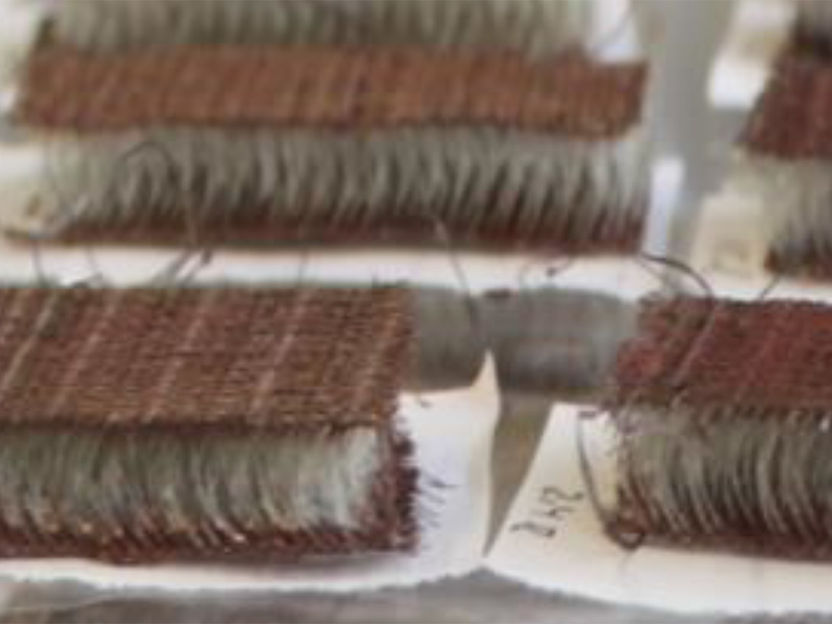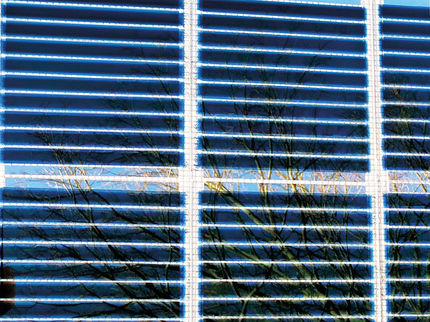Smart materials generate electricity and support temperature regulation through cooling
Next generation textiles
Advertisement
Researchers at Leibniz Institute of Photonic Technology in Jena, Germany, are developing a self-sufficient Energy supply based on textiles. In this way, it should be even easier in the future to supply mobile electronic devices worn close to the body with energy, even when no external power supply is available. Smart textiles use the warmth emitted by the human body and convert it into electricity. Their also cooling properties make the new materials interesting for safety-relevant applications and at the same time ensure increased wearing comfort and well-being.

Smart textiles: Spacer fabrics with thermoelectric coating for temperature sensing, energy harvesting and active cooling
Leibniz-IPHT
Miniaturized electronic devices worn on the body, socalled wearables, check vital functions, count steps or provide information about traffic and weather. In order to continuously supply these technical companions with power, researchers at Leibniz Institute of Photonic Technology (Leibniz IPHT), together with a team from ITP GmbH in Weimar, Germany, and the textile manufacturer E. CIMA in Spain, developed a material that supplies the required energy independently of external power sources: Modern, intelligent textiles convert body warmth into electricity using thermoelectric effects, which can be stored in a battery.
Independent power supply
„It is our vision to use textile materials for energy generation. Flexible, demand-orientated and environmentally friendly, these smart fabrics can supply mobile devices for consumer electronics or health applications self-suffciently with energy. Smartwatches or fitness bracelets are worn directly on the body and can thus be supplied with power at any time. Vital parameters can be, for example, measured and monitored continuously," explains Dr. Jonathan Plentz, head of the Photonic Thin Film Systems research group at Leibniz IPHT.
Focus on humans for energy generation
For power generation researchers from Jena use thermoelectric generators, which convert the body's own warmth into electrical energy (Seebeck effect). For this purpose, thin-film coatings in the form of aluminum-doped zinc oxide (Al:ZnO) are applied to textile fabrics as a thermoelectric functional layer. The researchers were able to measure thermoelectric effects with outputs of up to 0.2 μW by means of temperature differences between the user's skin surface and the ambient temperature or by means of industrial waste heat. The electricity generated could be stored in a battery to meet the energy needs of electronic devices for health or sports. "This makes the energy supply of devices self-sufficient," says Dr. Gabriele Schmid, project manager at Leibniz IPHT.
Thermoelectric cooling for more safety and well-being
The smart textiles can do much more: The thermoelectric effect can also be used for cooling by means of electrical energy and thus be used for cooling applications and temperature regulation (Peltier effect). Plentz sees a possible area of application in the steel industry: "Workers at blast furnaces are exposed to high levels of heat. Even after a short time, their body temperature rises significantly due to the surrounding heat. Intelligent cooling fabrics integrated into protective clothing can help to better regulate body temperature. In addition, the textile materials are characterized in particular by their air permeability, lightness and flexibility, which not only has a positive effect on thermal management, but also provides additional comfort in challenging working environments."
In tests, Peltier cooling demonstrated a temperature difference of up to 12 °C, which is unique for textile thermoelectric elements. In the future, this could not only be used to control temperatures in processcritical areas in industry, but also to provide even better protection for police and firefighters using smart textiles with cooling properties. An active regulation of body temperature with a high level of textile comfort is also very important in the field of well-being and in the medical environment (for example, to reduce fever). The cooling of transport goods by means of functionalized textiles opens up further fields of application.
Original publication
G. Schmidl et al.; "3D spacer fabrics for thermoelectric textile cooling and energy generation based on aluminum doped zinc oxide"; Smart Materials and Structures 29, (2020) 125003.
G. Schmidl et al.; "Aluminum-doped zinc oxide–coated 3D spacer fabrics with electroless plated copper contacts for textile thermoelectric generators"; Materials Today Energy 21 (2021) 100811.





























































